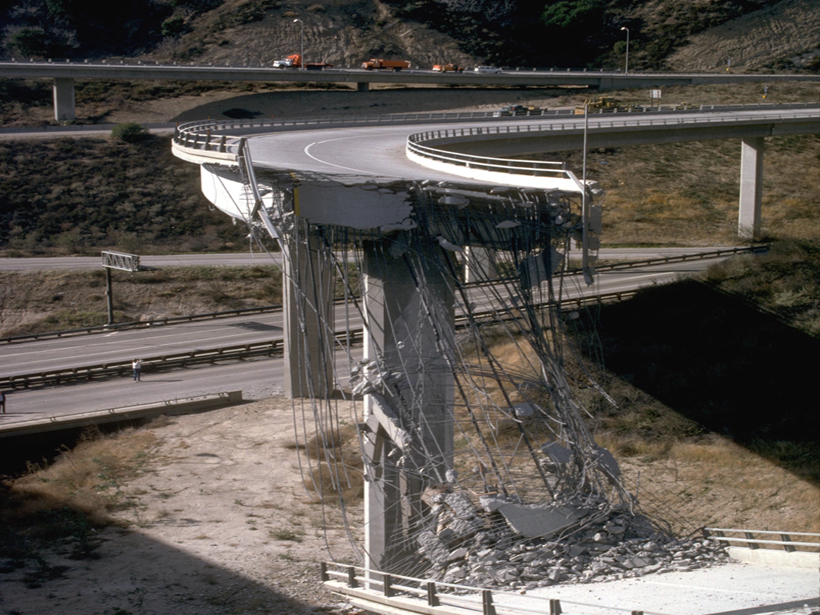The panel updated the hazards statement to reflect scientific and political progress and changing needs.
At the request of the American Geophysical Union (AGU), a panel of member-scientists has reviewed the organization’s position statement on hazards and drafted a revision of the statement. AGU assembled the 11-member panel, chaired by Jeff Freymueller of the University of Alaska Fairbanks, to update the hazards statement to reflect scientific and political progress and changing needs since the last substantive revision of the statement a decade ago.
Other members of the panel include Eddie Bernard, Greg Holland, Alik Ismail-Zadeh, Lucy Jones, Kelly Klima, Upmanu Lall, Kris Ludwig, Roger Pulwarty, Brian Tucker, and Lesley Wyborn.
The draft revised statement appears below. AGU offers all members the opportunity to provide comments by 30 September on this draft. Please submit comments via the online form available at https://sites.agu.org/sciencepolicy/draft-hazards-statement-comment-period-open.
AGU’s Board of Directors will consider the final statement for approval late this year.
First Hazards Statement Penned in 1996
AGU originally adopted a hazards position statement in 1996. The organization has revised and reaffirmed the statement multiple times since then, most recently in 2012. The 2012 revision consisted merely of adding an italicized summary paragraph after the statement title, which was done for all AGU position statements at that time.
Other Statements Available
AGU position statements relate the understanding and application of the Earth and space sciences to relevant public policy. The current list of AGU’s position statements can be found at https://sciencepolicy.agu.org/agu-position-statements-and-letters/.
AGU encourages members to use position statements to help educate stakeholders about important Earth and space science topics. Statements fit on a single page to make them of greatest use to legislators and other policy makers.
—Elizabeth Landau, AGU Public Affairs Manager; email: [email protected]
DRAFT STATEMENT
Resilience to Natural Hazards Requires a Partnership Between Scientists, Policy Makers, and Stakeholders
Natural hazards are inevitable, but disasters are not. Scientific research improves our understanding of disasters and the ways in which our society is damaged by hazards. We create a more resilient society where lives are saved and economic losses are minimized when this information is used in formulating public policy and when we take scientifically informed action towards preparation, response and recovery.
Natural processes on Earth and in space create many hazards, including earthquakes, volcanoes, landslides, tsunamis, floods, droughts, fires, heat waves, storms, space weather, and bolide impacts. Some hazards are increasing with time, such as those associated with sea level rise; in such cases, the past may not be representative of the future. Society’s hazard exposure increases with time as the world’s population rises and is more concentrated in cities, and with changes in new construction practices and land-use. Risk is a function both of hazards and society’s exposure and vulnerability. Dramatic evidence of these risks can be found every year in the form of human and economic losses.
To improve resilience to natural hazards, Earth and space scientists, engineers and social scientists together should (i) strengthen basic research into the links between natural hazards, their impacts and their underlying processes via monitoring, observations, analysis, modeling, and forecasting; (ii) analyze the impact of hazards on the built and social environments to determine how to reduce vulnerability, human and economic losses; and (iii) assess disaster risk knowledge to provide sound information to policy makers and to identify research gaps and future challenges.
In turn, scientists, engineers, policy makers, business leaders, emergency managers, educators, and other stakeholders should work together towards translating research findings into actions; understanding and responding to stakeholder needs; and applying new science to improve disaster preparedness, response, and recovery efforts through close communication, coordination, and collaboration.
A partnership for building a resilient society should be based on:
- RESEARCH: scientific research with strong cooperation between scientists, engineers, other stakeholders and policy makers at all stages of knowledge production from a problem statement to delivery of results and implementation.
- EDUCATION: enhanced training and education at all levels by implementing a trans-disciplinary approach to disaster science and risk reduction.
- AWARENESS: heightened public awareness of impacts of natural hazards and the need for scientific research and assessments to determine the best options for risk mitigation and increasing resilience.
- STRATEGY: cooperation in the development of nationally and regionally focused disaster risk reduction strategies, decision support tools, and information products to enhance informed decision making and outreach.
- INVESTMENT: investments in risk reduction research and measures that mitigate (if not prevent) disasters and promote resilience; and
- PREPAREDNESS & RESPONSE: enhancement of disaster preparedness and responses by implementing scientific knowledge.
Citation: Landau, E. (2015), Position statement on hazards: Call for comments, Eos, 96, doi:10.1029/2015EO035011. Published on 2 September 2015.
Text © 2015. The authors. CC BY-NC 3.0
Except where otherwise noted, images are subject to copyright. Any reuse without express permission from the copyright owner is prohibited.

